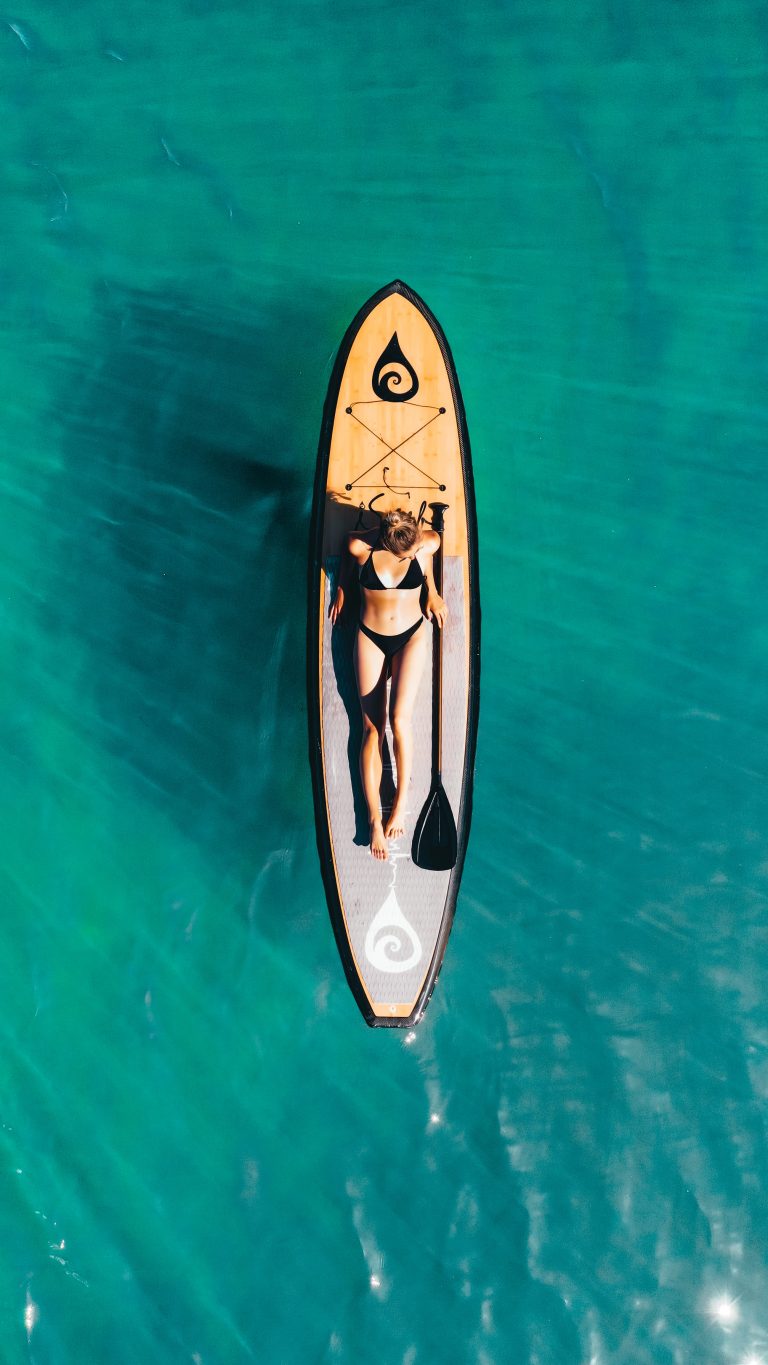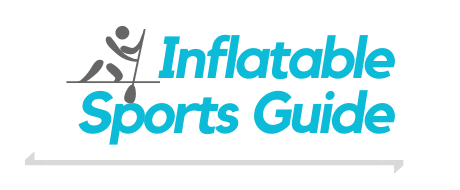If you’re thinking about getting an inflatable stand-up paddle board, and you’re having a hard time deciding which qualities you should consider—this is the perfect buying guide for you!
Honestly, buying an inflatable paddle board as a beginner could be overwhelming. With a vast range of selections available on the market, you’ll surely have to think things through. But today, we’re going to discuss the ten things that you should keep in mind before buying an inflatable SUP for beginners.
Let’s dive right in.

1. Inflatable Paddle Board Cost
Depending on how much you’re going to invest into paddle boarding, you might come across multiple sets of inflatable boat selections. We, too, think it would be great if we lived in a world where we don’t need to consider the price of a paddle board before buying it.
You can spend anywhere between $200 to $1,000+ on an inflatable stand-up paddle board. While there are other factors to consider before buying an inflatable SUP, setting your budget early on in the process will eliminate boats that are out of your price range. Having a pre-determined budget on how much you want to spend also helps narrow down your options to ensure you get the best value for your money.
We’ve learned that you get what you pay for when it comes to inflatable boats. It’s highly recommended to invest in a higher-end inflatable paddle board if you plan to use it frequently over an extended period.
2. Inflatable Board Category
There are several different categories of inflatable stand-up paddle boards. Let’s go over some of them:
- All-around inflatable SUP: If this is your first time buying an inflatable boat, you should stick to the all-rounder inflatable SUPs design that can handle virtually any type of paddling trip you want to do with it.
- Performance inflatable SUP: This board category is suitable for those who have experience with inflatable SUPs or other water sport vessels. Boats in this category typically have more performance in exchange for weaker stability.
- Purpose-specific inflatable SUPs: If you’re planning to do a specific activity such as whitewater adventure, surfing, or touring with your paddle board, it’s best to select boats designed for them. Whitewater and surfing inflatable SUPs can handle rough waves of the river/sea; touring inflatable SUPs are excellent for long explorations.
3. Weight Capacity
Each specific inflatable SUP has its carrying capacity that’s determined by its size and pressure rating. One of the most common mistakes in buying a paddle board for beginners is picking a model that can’t properly support their weight. When your paddle board cannot support your weight, it will partially be submerged, therefore, you won’t have the best experience. REI.com’s article on choosing SUPs also discusses how volume and weight capacity can impact your paddling experience.
It is really crucial that you should consider how much you weigh first, then, picking an inflatable paddle board that can comfortably carry you around on the water. It is also more preferable to have some headroom to account for the additional gears and belongings you’d like to bring with you on your water trips.

4. Size and Shape
After narrowing down your budget, category, and weight capacity, the next thing you have to consider before buying an inflatable SUP is its size and shape. Generally speaking, the bigger you are, the larger paddle board you’ll need, but everything still comes down to preference.
You can use these general guidelines to pick the right shape and size for your paddle board:
- Longer boards will have better glide than shorter ones.
- Narrower boards are typically faster than wider boards.
- Wide-tailed boards are more stable than narrow-tailed ones.
- Narrow-tailed boards are more maneuverable.
- Thicker boards can carry more weight than thinner boards.
- Thinner boards are generally more stable than thicker boards.
5. Materials and Build Quality
There is a wide range of materials and build quality for an inflatable SUP. It’s also crucial that you understand the basics of what each material means to the build quality of your board.
An inflatable SUP under $400 is likely to be made from a single-layer vinyl with a thick body to make up for the lack of rigidity in the material. There are also mid-range inflatable SUPs made from ‘fusion’ materials, which have a reinforced construction while still affordable. The more expensive models are typically made from two layers made from vinyl and reinforced PVC, which provides excellent durability.
6. Deck Pad Quality
The quality of your inflatable SUP’s deck pad can make or break your paddling experience because it is what keeps you out of the water for a longer time. A low-quality deck pad is often slippery and uncomfortable, making it easier for you to slide and lose traction while paddling. High-quality deck pads are usually made from grippy and textured materials, allowing you to stand more steadily while you’re paddling.
7. Riggings and Tie-Downs
The next thing you should consider is the layout of rings and bungee tie-downs on your paddle board. These riggings are essential because you will need at least enough to secure your gear and items that you bring on board.
The more bungee tie-downs you have, the better it is for you. However, having unnecessary accessories getting in the way of your paddle and footwork is the last thing you would want. A configuration that has been proven to work is having a single bungee and a D-ring on the nose and another D-ring at the tail.
8. Fin Selection
Fins and skegs are crucial since they can determine how well your inflatable paddle board will perform on the water. There are two styles of fin configuration in inflatable paddle boards:
- Configurable fin system: You can modify and tune your board’s performance with removable and interchangeable fins. The typical configuration slot is one large fin in the middle and two smaller ones on either side.
- Fixed fin system: You can’t remove or change the fins—you’ll only get the ones that come pre-attached to your board. The simplicity is great for those who aren’t particular about the board’s performance.
9. Inflatable SUP Accessories
When buying inflatable paddle boards for beginners, it’s best to look for something that includes everything you need in the package. Ideally, you should look for an inflatable paddle board that comes with:
- A high-output pump
- Paddle(s)
- A carrying bag
- A repair patch kit
- Fin(s)
- A personal inflation device
Today’s inflatable SUPs come with everything you need to get on the water, but some models don’t include a pump, which will eventually reduce your experience.
10. Portability
One of the main perks of having an inflatable paddle board is its portability and storability. If you live close to the water, it might not be an issue for you. But if you have to travel quite a distance to get in the water, picking a larger paddle board might become a hassle for you.

Conclusion
Generally speaking, it’s best to pick an inflatable paddle board that’s most suitable for your own water adventure needs. Or you might also want to check out the best inflatable boats for other water adventures like fishing, recreational, and the like.
Overall, many other factors can affect your full water experience, but these ten factors that we have laid out are what you should consider before buying an inflatable SUP.
Related Posts
- Best Inflatable Paddle Boards Under $400
Inflatable paddle boards can come in a wide range of prices, and today we're going…
- Finding the Best Inflatable SUP For Beginners
Finding the best inflatable SUP for beginners can be challenging due to the overwhelming amount…
- The Best Inflatable Dinghy
If you're looking for a small open boat for various purposes, this article will help…
